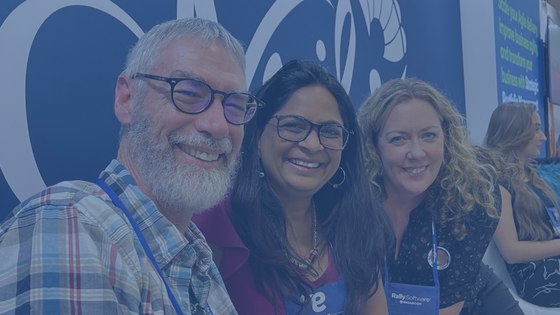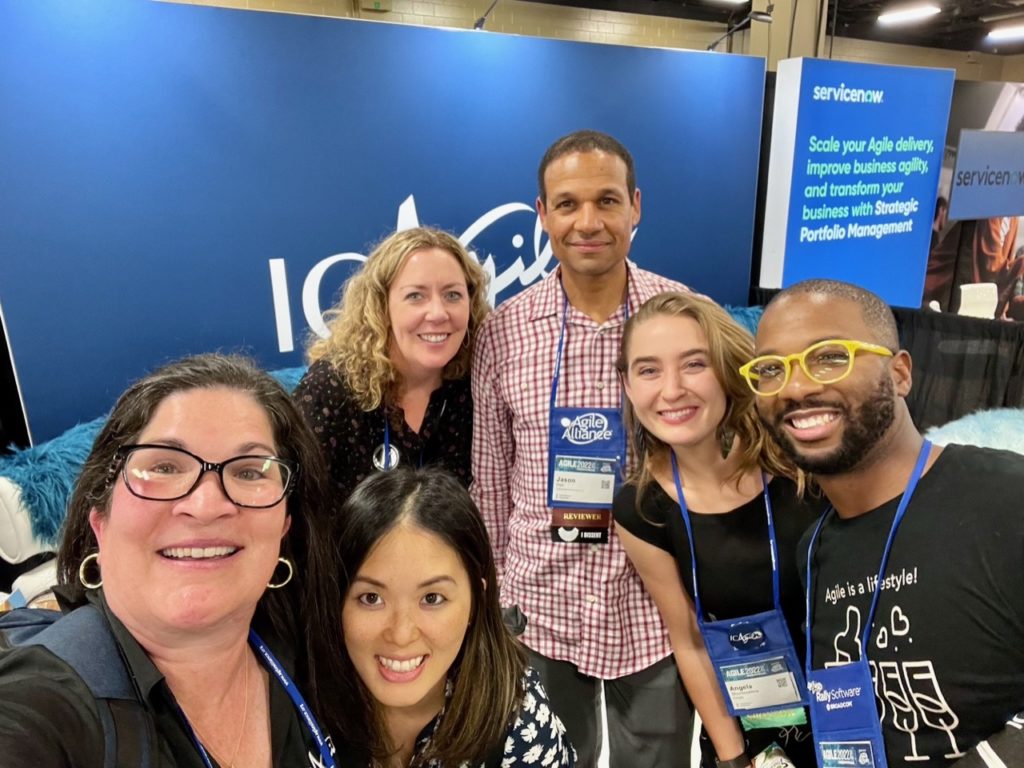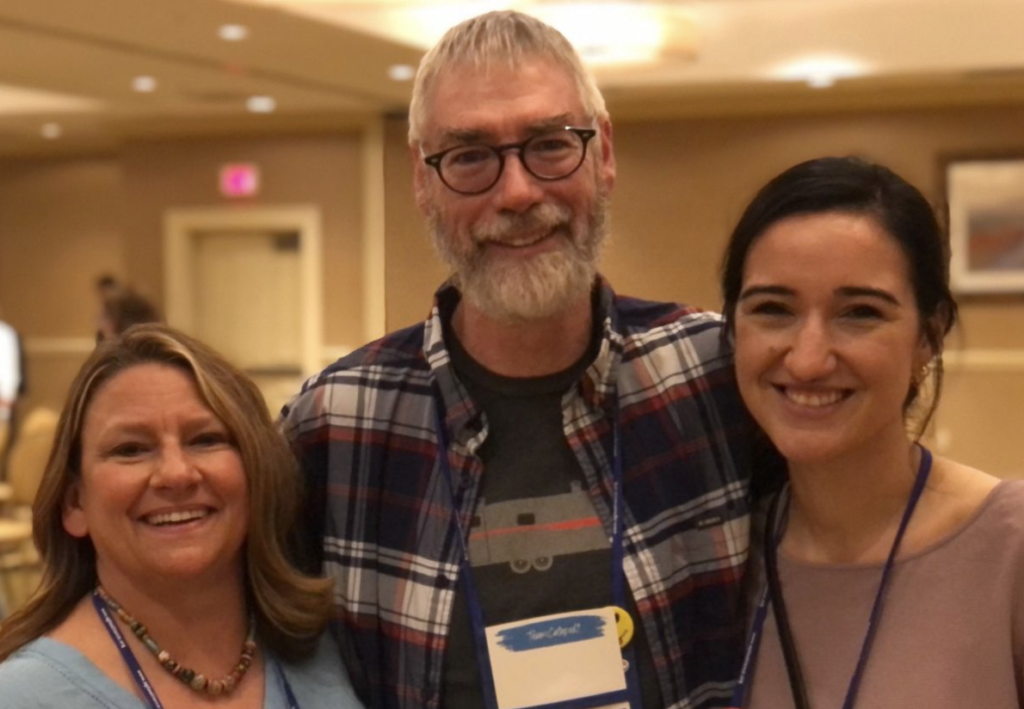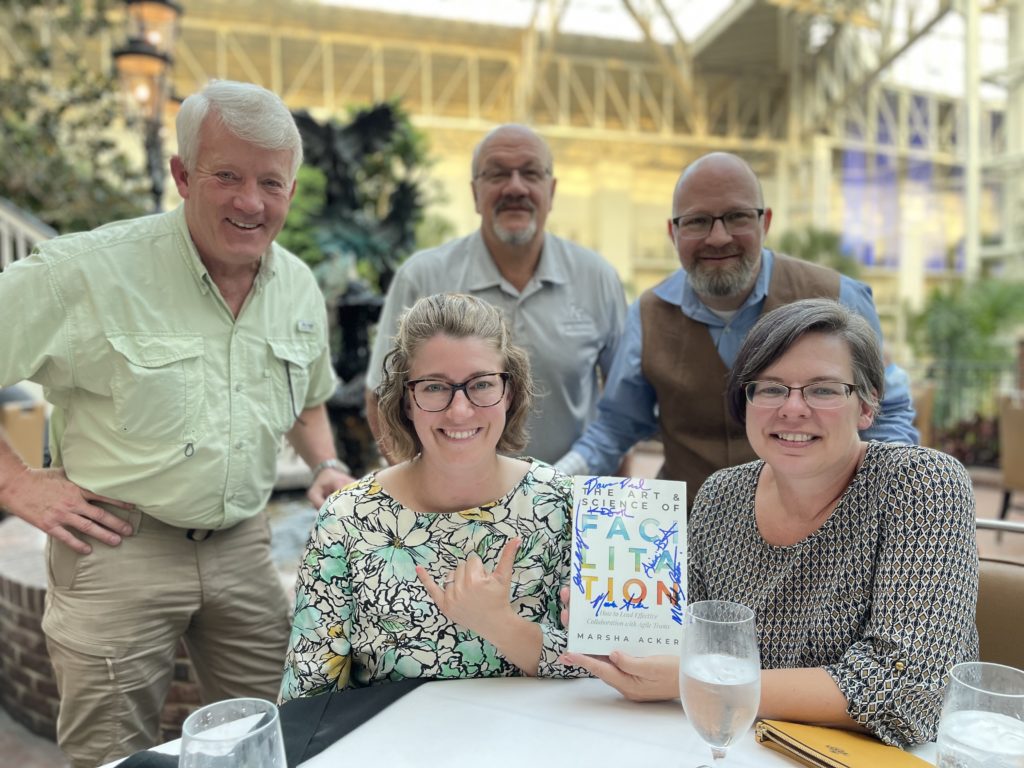In today’s dynamic and ever-changing business landscape, successfully leading change is not merely a choice but a necessity for organizational growth. Refusing to embrace change only perpetuates stagnation, hindering any potential for future advancement.
Within the corporate realm, staying complacent in the face of evolving circumstances is simply not an option. It is not uncommon for large organizations not to experience significant shifts, even after years of stability.
However, effective leadership skills come into play when leaders recognize the need to adapt and guide their teams toward a new approach, fostering an environment that embraces change and propels the organization toward its future vision.
While it may be tempting to resist change and cling to familiar routines, true leaders understand the power of navigating transformation and the role they play in influencing the behavior and mindset of their teams.
In this article, we delve into the crucial aspects of successfully leading change, while also exploring common pitfalls to avoid in order visionary guide us to ensure a smooth transition towards new approaches and organizational success.

Successfully Leading Change — And What to Avoid
Change is an inevitable force that transcends individual desires and company preferences. It is crucial to acknowledge that resisting change serves no purpose, for it is an essential catalyst for progress.
Succumbing to stagnation breeds fear of future growth and limits possibilities. Remaining steadfast in the status quo may seem like a plausible option, but it fails to recognize the ever-evolving nature of organizations.
Even after years in your role, you are likely to encounter changes within your organization. As a leader, your role becomes instrumental in facilitating your team’s adaptation to a future vision.
While it is possible for managers to turn a blind eye to the necessity of change, true leadership lies in actively leading the transformation effort and influencing behavioral shifts within your team. What is the meaning of Leading Change?

How do I lead change?
Leading change requires a multifaceted approach that combines effective leadership skills, a clear vision, and unwavering commitment.
As a leader, it is essential to understand that change is a continuous process within the realm of business. To successfully lead change, you must first articulate a compelling vision that inspires managers and employees alike.
Leaders recognize the challenges associated with change and proactively address them by fostering open communication, providing support, and encouraging collaboration. By nurturing a culture of adaptability and embracing innovation, leaders create an environment where employees feel empowered to embrace change, succeed, and contribute to the organization’s success.
Ultimately, leading climate change that requires not only a strong commitment to driving transformation but also the ability to navigate through obstacles and inspire others to succeed.
What is leading change in the workplace?
Leading change in the workplace encompasses the strategic management of a business and organizational-level leadership changes.
This process, known as change management, is designed to empower individuals undergoing change, equipping them with the necessary tools to achieve success. Change management programs focus on nurturing a supportive environment that enables individuals to navigate through the complexities of change effectively.
Leaders understand that leading change requires more than just implementing new policies or procedures; it necessitates comprehensive planning, strategy, communication, and collaboration. By providing guidance, fostering resilience, and facilitating skill development, leaders empower their teams to embrace change, adapt to new circumstances, and drive the organization toward its desired business outcomes.

How do you demonstrate leading change?
Demonstrating leading change requires a combination of actions and behaviors that showcase your ability to effectively drive and manage transformation. Firstly, it involves clearly articulating a compelling vision for the desired change and consistently communicating it to stakeholders. Demonstrating leadership in managing change also entails leading by example, displaying resilience, and embracing flexibility in the face of challenges.
It involves actively involving and engaging employees, empowering them to contribute their ideas and perspectives. Leaders in leading change management exhibit strong decision-making skills, taking calculated risks and making timely adjustments as needed. Additionally, fostering a culture of continuous learning and providing support and resources to individuals navigating change are vital aspects of demonstrating leadership in managing change. By displaying adaptability, inspiring others, and ensuring transparency throughout the process, leaders effectively demonstrate their commitment to driving successful change initiatives.
Will everyone be accepting of change?
When embarking on change initiatives, it is important to recognize that not everyone will be readily accepting of change. Resistance to change is a common and natural response, stemming from various factors such as fear of the unknown, comfort with the status quo, or concerns about personal or professional impacts.
It is crucial for leaders to acknowledge and address this resistance effectively. By fostering open and transparent communication, providing clear rationale and benefits for the change, and actively involving employees in the process, leaders can help alleviate concerns and increase acceptance.
Additionally, creating a supportive and inclusive environment, offering resources and support for skill development, and addressing individual needs and concerns can contribute to a smoother transition. However, it is important to note that complete acceptance from everyone may not always be achievable.
Effective change leadership involves finding a balance between addressing resistance, encouraging open dialogue, and focusing on those who are willing to embrace the change. By understanding the dynamics of change acceptance and implementing strategies to manage resistance, leaders can navigate the complexities of change more effectively and increase the likelihood of successful outcomes.

Establish that the change is necessary
To establish that a change is necessary, it is essential to effectively communicate the reasons behind it and the potential benefits it can bring. Start by clearly identifying and articulating the current challenges or gaps that the organization or team is facing. This can involve presenting data, conducting assessments, or sharing insights from market research. Engage stakeholders in conversations to help them understand the need for change and how it aligns with the organization’s goals and objectives. Provide real-life examples or case studies to illustrate the potential positive outcomes of the proposed change.
It is crucial to address any concerns or resistance by actively listening and addressing questions or objections. By demonstrating the sense of urgency and relevance of the change, leaders can establish a shared understanding and gain buy-in from stakeholders, paving the way for successful implementation.
Value your company culture
Often companies have a culture that has a solid foundation but not necessarily the right time for cultural transformation.
Value your company culture as it serves as the bedrock of your organization’s identity and influences the attitudes and behaviors of your top managers and employees. While some companies may already have a well-established and solid foundation in terms of their culture, it doesn’t mean that cultural transformation should be overlooked. It is crucial to recognize the importance of continuously assessing and evolving your organization and company culture to ensure it remains aligned with your values and supports your goals.
To encourage a positive employee attitude, it is imperative to prioritize the nurturing and development of your corporate culture. This can be achieved through various means, such as fostering open communication channels, promoting collaboration and teamwork, and recognizing and rewarding behaviors that align with your desired culture. Additionally, leaders play a pivotal role in driving cultural change by exemplifying the desired attitudes and behaviors and providing guidance and support to employees.
To facilitate cultural transformation, reaching out to the Human Resources (HR) department can be an excellent avenue. HR personnel can assist in creating awareness and understanding among employees regarding the organizational culture and provide guidance on how to align individual attitudes and behaviors with the desired cultural values. By valuing and actively investing in your company’s culture, you lay the foundation for a thriving and engaged workforce that contributes to the long-term success of your organization.

3 common mistakes when trying to lead changes
When attempting to lead changes, it is crucial to be mindful of common mistakes that can hinder progress. Three common mistakes include inadequate communication, lack of sense of urgency, and failure to create short-term wins.
1 Under communicating the vision by a factor of ten
Effective communication is essential in ensuring that everyone understands and aligns with the vision for change. However, leaders often underestimate the amount and frequency of communication needed to truly convey the vision.
Under-communicating the vision can lead to confusion, misunderstandings, and lack of buy-in from stakeholders. To avoid this, leaders must proactively communicate the vision, its rationale, and the expected outcomes repeatedly and consistently. They should utilize various channels such as team meetings, emails, presentations, and one-on-one conversations to ensure that every individual is well-informed and understands the importance of the change.
By over-communicating the vision, leaders can ensure that it becomes ingrained in the organization’s culture and that everyone is on board, increasing the likelihood of successful change implementation.
2 Not establishing a great enough sense of urgency
Creating a compelling case for change and instilling a sense of urgency is crucial to overcome complacency and inspire action. Without a clear understanding of the urgency and importance of the change, stakeholders may resist or become indifferent, hindering progress.
Leaders must effectively communicate the reasons behind the change, highlighting the risks of inaction and the potential benefits of embracing change. By establishing a strong sense of urgency, leaders can ignite motivation, encourage proactive engagement, and foster a collective commitment to driving the necessary changes.
It is through this heightened sense of urgency that organizations can navigate challenges, seize opportunities, and achieve successful outcomes during times of transformation.
3 Not systematically planning for, and creating short-term wins
Real transformations take time, and renewal efforts can lose momentum if they don’t achieve the long-term goals that they are celebrating.
Most people are reluctant to take part if there is compelling evidence of its success within 12 to 24 months. Many people give up and become active supporters of change. During a successful transformation process, quality begins to rise in some indicators, while net profit declines stop.
It’s good to acknowledge wins and share them with your team as it demonstrates how your successful transformations may have been effective. Celebrating victories helps boost team spirit and performance. Plus, they encourage others to improve their efficiency while evaluating and planning for their future.
Be purposeful with your planning
To successfully lead transformation efforts in the ever-evolving business world, it is crucial for leaders to be purposeful in their planning. Strategic planning plays a pivotal role in orchestrating major changes within a company and requires a comprehensive approach. Great leaders understand the importance of evaluating the impact of reengineering and new initiatives in the present, considering both short-term and long-term implications. This involves analyzing the potential effects on various aspects such as operations, resources, and stakeholders.
Seeking input from partners and stakeholders is vital for gaining diverse perspectives and ensuring alignment with organizational goals. Collaboration and consultation foster a sense of ownership and promote a collective effort toward successful change implementation. By being intentional and thorough in their planning, leaders can navigate complexities, mitigate risks, and leverage opportunities, ultimately fostering a culture of effective change management within the organization.

Leading change efforts gone wrong
Leading change efforts is a complex task that, when mishandled, can result in unintended consequences and unsuccessful outcomes. There are several common pitfalls that can derail change initiatives and turn them into a challenging endeavors. One such mistake is a lack of clear change vision, and communication.
When leaders fail to articulate a compelling change vision and communicate it effectively to their teams, it creates confusion and resistance among employees. Another pitfall is insufficient stakeholder involvement and engagement. When key stakeholders are not included in the change process, their support and buy-in may be lacking, leading to implementation challenges and limited success.
Additionally, inadequate change management strategies and a failure to address resistance can impede progress. Efforts to change gone wrong can also be attributed to a lack of flexibility and adaptability, as unforeseen obstacles may arise during the transformation process. By understanding these potential pitfalls and proactively addressing them, leaders can navigate change more effectively and increase the likelihood of successful outcomes.
When transformation efforts fail
Despite the best intentions and efforts, there are instances where transformation efforts can fail to achieve the desired outcomes. Several factors contribute to such failures. One common reason is a lack of clear goals and objectives. Without a well-defined purpose, it becomes challenging to align actions and measure progress, leading to a lack of direction and motivation. Insufficient planning and execution can also hinder transformation efforts.
Inadequate strategic planning, resource allocation, and project management can result in missed deadlines, budget overruns, and overall project inefficiencies. Furthermore, a failure to address organizational culture and employee resistance can impede progress. Change is often met with resistance, and neglecting to manage and address these concerns can undermine the success of transformation efforts.
Poor communication and insufficient stakeholder engagement can lead to misalignment, misunderstandings, and decreased support for change initiatives. By recognizing these potential failure points and proactively addressing them, organizations can learn from their mistakes and take corrective actions to increase the chances of successful transformation in the future.
Building a Model for Leading Change
Building a robust and effective model for leading change is essential for navigating the complexities of many transformational change initiatives. The book, “Build Your Model for Leading Change,” is specifically designed to help individuals uncover and develop their own actionable model for leading sustainable and meaningful change in themselves, their teams, and their organizations. The workbook guides individuals through various steps to create their unique model for change leadership.
One important aspect emphasized in this workbook is the need to define a clear vision for how change happens, enabling leaders to show up with intention, purpose, and transparency. By understanding the underlying dynamics of change and developing a working understanding of one’s core behavior patterns and beliefs, leaders can deepen their self-awareness and gain insights into new approaches and new behaviors, and their impact on interpersonal and group dynamics.
“Build Your Model for Leading Change” provides insights, examples, and guidance to support individuals on their journey of business leadership and personal growth. It explores how core behavior patterns and beliefs influence leadership styles, work relationships, and life overall. By engaging with the workbook, leaders can enhance their ability to successfully lead others while also experiencing personal transformation that extends to all aspects of their lives.
This workbook is a valuable resource for individuals and companies seeking to build a solid foundation for leading change and show up more fully in every sphere of their life and business. It offers a structured and reflective process that encourages self-discovery, personal and business growth, and the development of an effective model for leading change.
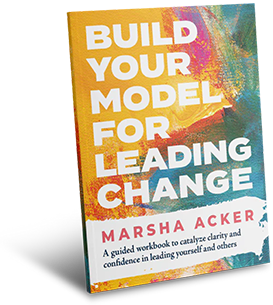
Leaders: Deepen self-awareness and understanding of your impact on others
Deepening self-awareness and understanding one’s impact on others is a crucial aspect of effective change leadership. By cultivating self-awareness, leaders gain insights into their own thoughts, emotions, and behaviors, allowing them to identify patterns and tendencies that may influence their leadership style. This self-reflection enables leaders to recognize the impact they have on individuals and groups, fostering a greater understanding of how their actions and decisions shape work relationships and team dynamics.
Through deepening self-awareness, leaders become more attuned to their strengths, weaknesses, and blind spots, which empowers them to make conscious choices and adapt their approach to better serve their teams and drive successful change. By continually honing their self-awareness and understanding their impact on others, leaders create an environment of trust, empathy, and effective collaboration, which are essential ingredients for leading transformative change.
Expand leadership skills so you can confidently lead change
Expanding leadership skills is essential for leaders to confidently navigate and lead change initiatives. Effective change leadership requires a diverse set of skills that empower leaders to guide their teams through their transformational change journeys. One critical skill is strategic thinking, enabling leaders to analyze the big picture, anticipate potential obstacles, and develop innovative solutions to drive change. Additionally, effective communication skills are crucial for conveying the vision, purpose, and benefits of the change to stakeholders at all levels. Leaders must be able to articulate their ideas clearly, actively listen to feedback, and address concerns to foster understanding and alignment.
Cultivating strong interpersonal skills is vital for building relationships, influencing others, and managing conflicts that may arise during the change process. Empathy, emotional intelligence, and the ability to build trust create a supportive environment that encourages collaboration, open dialogue, and commitment to the change initiative. Adaptability and flexibility are also key as leaders must be open to new ideas, take new approaches, embrace ambiguity, and adjust strategies as needed in the face of evolving circumstances.
Developing resilience is another important aspect of expanding leadership skills for change. Efforts to change often encounter obstacles and setbacks, and leaders must be able to maintain their composure, stay focused, and inspire their teams to persevere. By building resilience, leaders can effectively manage challenges and setbacks, model a positive mindset, and motivate their teams to overcome obstacles.
Continuous learning and self-development are fundamental for expanding leadership skills. Leaders should seek opportunities for professional growth, such as attending workshops, obtaining certifications, or seeking mentorship from senior executives, to further enhance their leadership capabilities and stay abreast of best practices in change management.

Leading Change Management: What does your leadership model look like?
Leading change management requires the development of a well-defined leadership model tailored to your unique style and the specific needs of your organization. Your leadership model serves as a roadmap for guiding your actions, behaviors, and decision-making throughout the change process. It encompasses various elements, including your approach to communication, stakeholder engagement, and addressing resistance.
Within your leadership model, effective communication plays a vital role. You outline strategies for clearly articulating the vision for change, fostering open and transparent communication channels, and actively listening to the concerns and feedback of stakeholders. By prioritizing effective communication, you ensure that everyone understands the purpose, benefits, and progress of the change initiative.
Stakeholder engagement is another critical component of your leadership model. You define strategies for involving and empowering stakeholders at your organization at all levels, cultivating a sense of ownership and commitment to the change. This strategy may include creating opportunities for collaboration, seeking input, and facilitating open dialogue to foster a shared understanding and alignment.
Addressing resistance and managing conflicts is an integral part of your leadership model strategy. You outline strategies for identifying potential sources of resistance, proactively addressing concerns, and promoting a supportive environment that encourages dialogue and problem-solving. Your model emphasizes the importance of empathy, active listening, and conflict resolution skills to navigate challenges and build consensus.
Your leadership model reflects your approach to decision-making, resource allocation, and risk management. It outlines your guiding principles for balancing efficiency, effectiveness, and adaptability in order to drive successful change outcomes. By incorporating these elements into your leadership model, you create a comprehensive framework that aligns your leadership style with the unique demands of change management, empowering you to lead with confidence and achieve impactful results.
Leading Change Management: What is your style?
Leading change management requires understanding and embracing your own unique leadership style. Your leadership style influences how you approach and navigate change, impacting the effectiveness of your change management efforts.
Identifying and understanding your style is crucial for leveraging your strengths and addressing potential blind spots. Some leaders may adopt a visionary style, inspiring and guiding their teams through a clear and compelling vision for change.
Others may take a collaborative approach, involving stakeholders and fostering collective ownership of the change process. Some leaders may prefer a coaching style, providing guidance and support to individuals as they navigate the complexities of change. Additionally, there are leaders who adopt a more directive style, providing clear instructions and driving change through assertive decision-making.
Understanding your style allows you to leverage it effectively while also adapting your approach to suit the specific needs and dynamics of each change initiative. By reflecting on and refining your leadership style, you can enhance your ability to lead change management initiatives with confidence and effectiveness.
Implementing a new model to lead change
Implementing a new model for leading change is a strategic undertaking that requires careful planning, execution, and adaptability. By adopting a new model, organizations aim to enhance their change management capabilities and drive successful transformations. The implementation process begins with a thorough evaluation of the existing approach, identifying strengths, weaknesses, and areas for improvement.
A clear roadmap is developed, outlining the steps, resources, and timelines required for a smooth transition to the new model. Effective communication is crucial throughout the implementation, ensuring that all stakeholders understand the rationale, benefits, and expectations associated with the change.
Training and development initiatives are employed to equip leaders with the necessary skills and knowledge to effectively lead under the new model. Continuous monitoring and evaluation mechanisms are put in place to gauge the model’s effectiveness and make necessary adjustments as needed. By implementing a new model for leading change, organizations position themselves for greater agility, innovation, and adaptability, enabling them to navigate the complexities of the ever-changing business landscape.

Start Building your Leadership Model today
“Build Your Model for Leading Change,” offers a transformative journey towards building your own unique leadership model. This workbook provides invaluable guidance and practical exercises to help you uncover and develop an actionable model for leading change effectively.
By delving into the pages of this book, you can start building your leadership model today, gaining a deeper understanding of your strengths, values, and leadership style.
Through introspection, self-reflection, and practical applications, you will be empowered to define your vision, enhance your communication skills, and cultivate the necessary mindset and behaviors to navigate change successfully.
“Build Your Model for Leading Change” serves as a trusted leader and companion, inspiring you to embark on a personal growth journey that will unlock your leadership potential and enable companies around you to succeed and make a lasting impact in the ever-evolving business landscape. Start building your leadership model today and embrace the transformative power of change leadership.
Leading Team Transformation with a new vision
Leading team transformation with a new vision is a powerful endeavor that requires building your own model of leadership. By embracing the art of business leadership and crafting a personalized approach, effective leaders can inspire their teams, navigate major changes, and drive successful transformations.
The process of building a leadership model involves defining a clear vision, fostering a commitment to change, and developing the necessary skills and strategies to navigate obstacles and engage stakeholders.
Through continuous learning, self-reflection, and adaptation, leaders can create an environment that embraces change, empowers individuals, and propels the organization toward a future of growth and innovation. As you embark on your own leadership journey, remember that leading change is not just about achieving short-term goals; it is about fostering a culture of transformation and equipping your team with the tools they need to thrive in an ever-evolving business landscape.
With your unique leadership model in hand, you are poised to inspire, transform, and lead your team toward a brighter future.


